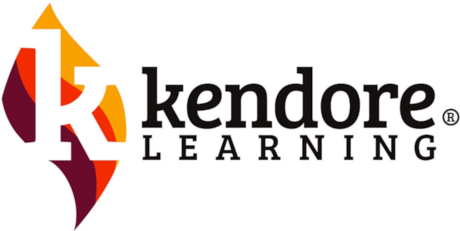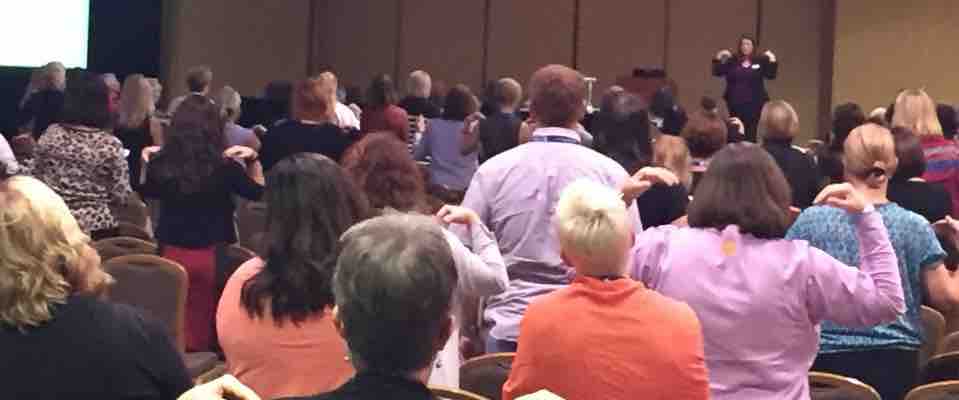Creating Fluent Readers by Incorporating Tracking, Prosody, Vocabulary, and Grammar Throughout Phonics Instruction
Jennifer Hasser, M.Ed., Executive Director, Kendore Learning and Syllables Learning Center,
770-752-1724
Fluent readers possess skills that extend beyond phonics: they track from line to line, incorporate prosody (proper stress and intonation) in their speech, understand vocabulary, and apply rules of grammar and punctuation. For dyslexic students, these building blocks of fluent reading often do not come naturally. Building a Rock Solid Foundation demonstrated proven strategies for teaching these skills simultaneously with all levels of phonics instruction. Participants learned engaging, multisensory activities to use with students of any age to pave the way to reading fluency. The following videos and text support the concepts learned at this interactive workshop.
Vocabulary Activity: Venn Diagrams
It is important to emphasize vocabulary throughout phonics instruction — even when teaching at the consonant, vowel, consonant level. This is because the most simple, monosyllabic words often have multiple meanings and parts of speech (as opposed to longer words containing Greek, Latin and other roots, which tend to have more limited meanings). The video below will show you how to help your students explore word meaning using a fun venn diagram activity. Students can use this activity at their desks in pairs or groups, as shown in the video. You can make this a whole group activity by creativng a venn diagram with hula hoops placed on the floor.
Download Venn Diagram Worksheets
Sound Stretches
Phonemic awareness (the ability to hear sounds in words) is a critical skill for reading success. Sound stretches help students break words down into sounds, as demonstrated in this video.
Oral Punctuation
It is important for students to begin constructing sentences and paragraphs orally, before they are ready to write. Oral punctuation, as developed by Whole Brain Teaching, provides students with a system of hand gestures that physically represent punctuation and capitalization in their speech. Students open their arms vertically (like an alligator’s jaw) when speaking a capitalized word. They make a “zhoop” sound and twist their wrists to symbolize a comma, and make an “eerp” sound with an outstretched hand gesture for a period. With this technique, students begin to visualize grammar and sentence structure early, and prepare to read complex text and eventually write on their own.
Classroom Exercise
Line four or five students in a row. Have the students pick a topic (ie, pets). Have the first student construct a topic sentence using oral punctuation. The next two or three students should each provide a supporting sentence, and the final student will create a concluding sentence. Students can physically see how a paragraph is created. Have the students move into a different order to see what happens to the paragraph when the sentences switch places. Does the paragraph still work? Does it make sense?
For example:
Topic Sentence: I like to take care of my pets.
Support Sentence 1: I have two cats and one dog.
Support Sentence 2: I take my dog on long walks, feed him, and let him sleep on my bed.
Support Sentence 3: My cat likes to chase toys I toss in the hallway.
Conclusion Sentence 4: Having pets is a lot of fun.
Think about what happens if the sentences move. Giving the students an anchor (the visualization of capitalization and punctuation and associating each sentence with the person who constructed it) helps the students see how written language is formed and can be manipulated.
To teach students tense, have them stand up. Speak a sentence aloud to them or have them develop a sentence on their own using oral punctuation. After the sentence is spoken, the students should jump up in place if it is in present tense, jump backward for past tense, and forward for future tense.
Phoneme/Morpheme Manipulation: People Mover
Tracking Activity: Line and Loop
Tracking from line to line while writing is a skill that does not come naturally to many students, particularly those with dyslexia. Picture how we walk down grocery store aisles. When we get to the end of the aisle, we head the opposite direction down the next aisle. Tracking from left to right, then moving down and tracking from left to right over again is not a natural movement for most people. Line and Loop is an exercise that will give your students practice tracking.
For more advanced students, you can practice line and loop with fluency drills or stories. Ask your students to loop the concepts you are practicing: non-phonetic sight words, r-controlled vowels, etc.
Beach Ball Toss
Learning is more effective when students are up and moving. One activity we love at Kendore is the Beach Ball Toss! Kids practice new concepts by tossing a beachball and working on whichever concept (letter, sound, word, syllable type, etc.) lands under their thumbs.


